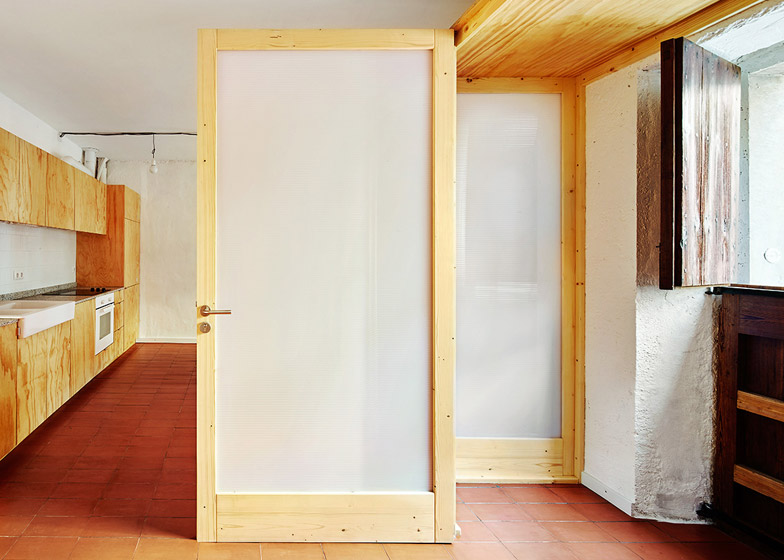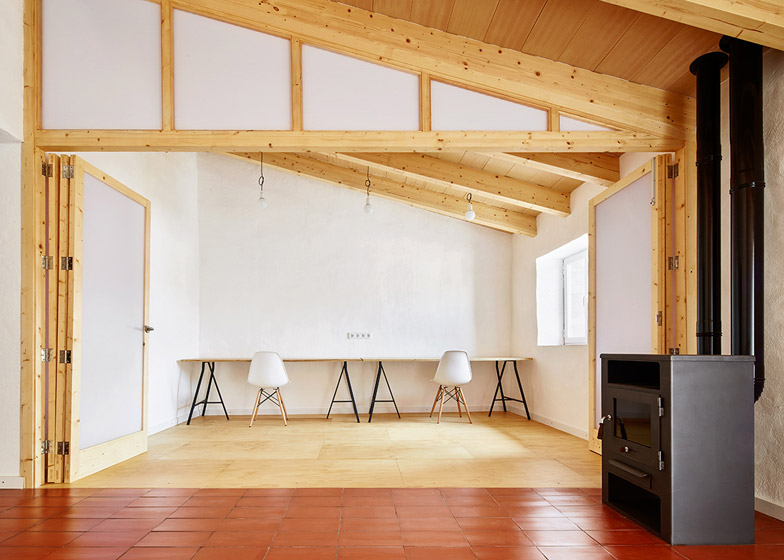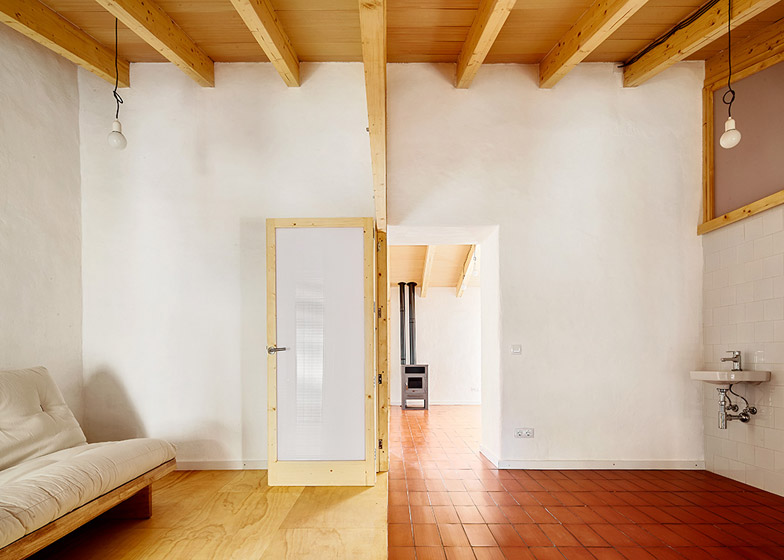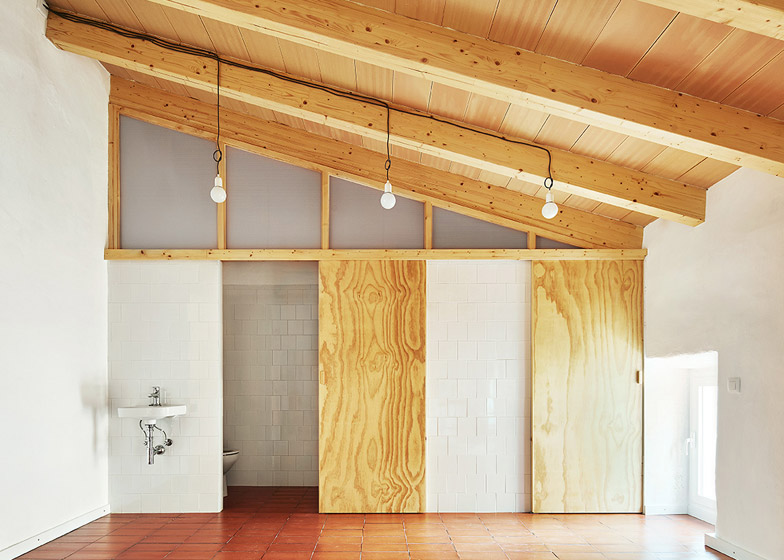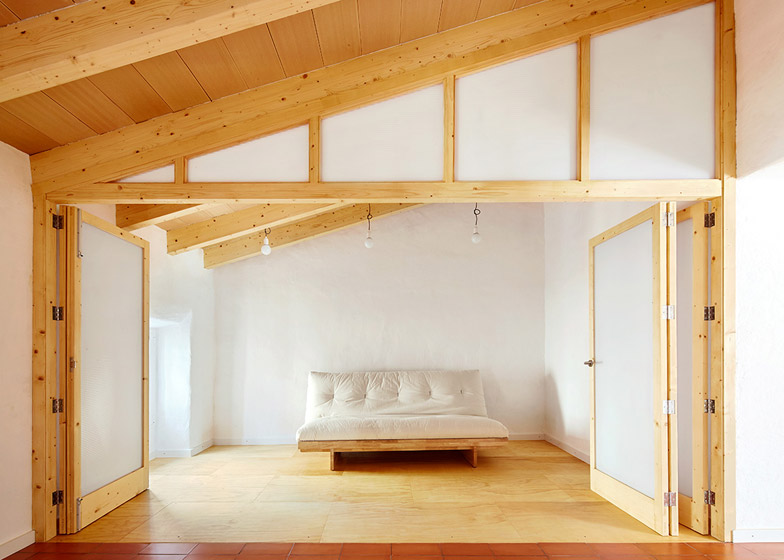Wooden walls concertina across open-plan living areas to subdivide this renovated stone house and extension by Spanish office XLMS (+ slideshow).
XLMS refurbished and extended the two-storey 19th century house in Mallorca, called Ca s'Ametller, adding a steel and polycarbonate-clad extension to the stone structure to accommodate further bedrooms, living spaces and an artist's studio.
The Barcelona-based studio was asked to design a space with flexibility of use, primarily to be made use of as a holiday home for a couple, but occasionally for extended family reunions.
"This meant that the house and its space had to be fully enjoyable and adaptable to each case," the architects told Dezeen.
"The house can adapt from being a one-room house to a four-room house and all the spaces fulfil a function at all times."
The house has five open-plan spaces – two in permanent use as living rooms and three with sliding wooden walls that can split to join them together.
The extension is clad in steel and polycarbonate panelling that coordinates with the interior detailing. A metal mesh layered over the frosted polycarbonate sections is intended to support vines and planting that will grow over the facade to create a "green wall".
"As continuous as the space needed to be on the inside, we thought that a new volume had to stand out from the existing 19th century house to clearly portray the architectural intervention," XLMS architect Xavi Lozano Segarra told Dezeen.
"We also wanted to have the bond between the interior intervention and the new facade, and we did this through the polycarbonate panels."
Doors with fir-wood frames and polycarbonate inserts fold back across the interior spaces to subdivide the open-plan living space into separate rooms when the house is fully occupied.
"The main requirement for the folding doors was to be light and easy to open and close. Since the functions of the space will change at times the partitions needed to be as flexible as possible," said Segarra.
"Most of the time, the space will be completely open. This means the partitions need to have the ability to 'disappear'."
Terracotta-coloured ceramic tiles line the floors throughout the house, which has white walls and wooden structural and decorative elements.
"The design had to harmonise tradition and modernity," said the architects, "we combined local materials like ceramic tiles and whitewashed walls with sleek and modern solutions like laminated wood and polycarbonate."
On the ground floor a bedroom and a bathroom are located in the new building, while a living space and kitchen with pine plywood cabinets and surfaces are situated in the old stone structure.
The walls and ceiling of the interior space of the new volume are lined with thick fir beams, creating a series of arches that runs through the rectangular volume. The ceiling is clad with sections of oriented strand board (OSB) – a heavily textured chipboard.
"The intention for the whole project was for it to be harmonious and light to emphasise the space. We found the combination of soft woods and ceramic to fit well together," he said.
On the upper floor, sections of pine are set into the predominantly orange tiled floor to visually differentiate the spaces.
"We chose the same pavement, ceramic planks, for both interior and exterior to enforce the idea of the house being livable both inside and outside," he added.
Photography is by José Hevia.



